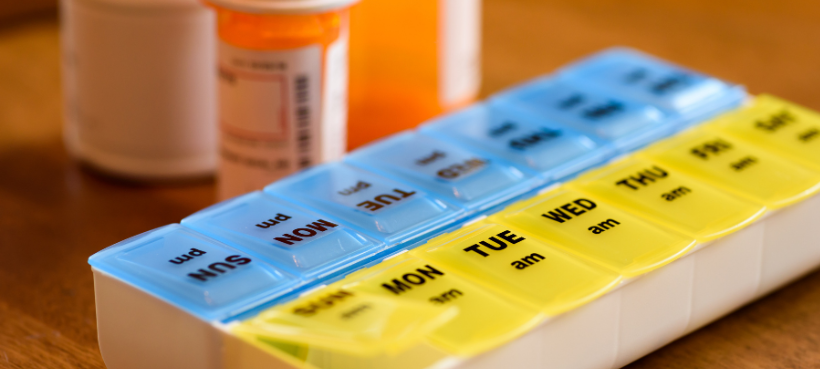
Organizing your medications: The benefits of compliance packaging for safety and convenience
October 10, 2023
Managing medications effectively is a crucial component of health, particularly for those with complex medication regimens. Disorganized medication schedules can lead to missed doses, accidental overdoses, and reduced treatment effectiveness. Thankfully, there are a number of strategies to mitigate these issues. Most of these solutions fall under the umbrella of compliance packaging.
Our pharmacists at Lakeside Medicine Centre often recommend and facilitate compliance packaging for patients who need extra support in organizing their medications.
What is compliance packaging?

Compliance packaging, also known commonly as adherence packaging or blister packaging, is a specialized approach to medication packaging designed to help patients take their prescribed medications correctly and consistently. It addresses the challenge of medication non-adherence, which occurs when patients forget to take their medications, take the wrong dose, or discontinue treatment prematurely. Compliance packaging aims to simplify the medication regimen for individuals, especially those with complex medication schedules, by organizing pills into individual compartments for each dose and day.
When is compliance packaging beneficial?
Compliance packaging offers several benefits for both patients and healthcare providers. It can improve medication adherence rates, which in turn can lead to better health outcomes and reduced hospitalizations. Patients find it easier to manage their medications, reducing the likelihood of missed doses. Pharmacists and healthcare providers can also use compliance packaging as a tool to educate patients about their medications, fostering a better understanding of their treatment plans.
Ultimately, compliance packaging serves as a valuable resource in promoting safe and effective medication management, especially for individuals with chronic conditions or complex medication regimens.
Types of compliance packaging

Compliance packaging comes in various forms, each designed to address different patient needs and preferences.
One of the most common forms of compliance packaging is the blister pack, which consists of a sheet of plastic or foil with individual pockets or blisters for each medication dose. Each blister is labeled with the date and time the medication should be taken, making it easy for patients to follow their prescribed regimen accurately.
Here is a comprehensive list of other types of compliance packaging:
Medication synchronization packaging (med sync): Medications are synchronized and packaged together for convenient refills and simplified administration. This option reduces the number of times a patient needs to return to the pharmacy for various refills and the number of packages they need to keep track of.
Multi-dose packaging: Medications for different times and days are grouped together in one package, often with individual compartments or pouches.
Unit-dose packaging: Medications are pre-packaged in single-dose units, typically used in healthcare facilities to reduce the risk of cross-contamination.
Pill organizers or pill dispensers: These are typically reusable containers with compartments for organizing medications for a week or month.
Medication cards: Cards with blister-style compartments, often used for organizing medications in a wallet-sized format.
Dosage cups and spoons: Measuring devices included with liquid medications to ensure accurate dosing.
Dispill: A specific brand of multi-dose packaging that combines a calendar blister pack with unit-dose blister packaging.
Medication bubble packs: Similar to blister packaging, but medications are individually sealed in bubbles within a larger card or sheet.
Color-coded packaging: Labels or packaging that use color-coding to help patients identify medications and dosing times more easily.
Custom medication packaging: Tailored packaging solutions designed for specific patient needs or medication regimens.
Each type of compliance packaging caters to different levels of complexity in medication regimens and helps patients manage their medications more effectively. To learn more about how compliance packaging could be incorporated into you or your loved one’s medication schedule, talk with your pharmacist or give us a call.